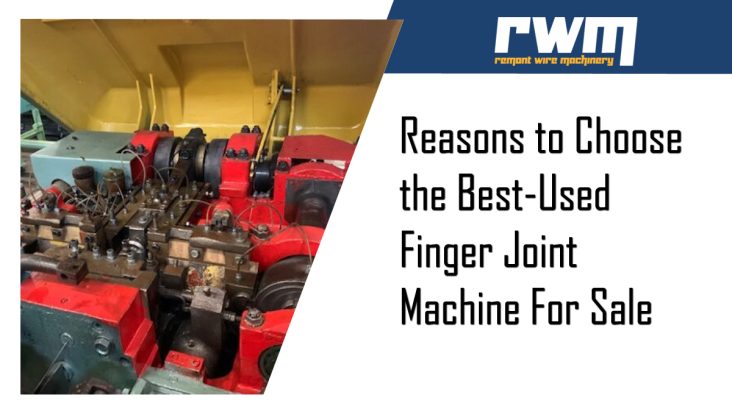Finger joints are one of the most stable methods of wood-length joining. These are different from various types of box joints that use teeth for fitting into each block end-to-end. Such joints carry short pieces of lumber to reduce and control wooden waste. It helps to use shorts for attaining maximum profits apart from the rising demand and costs of raw materials.
Choosing a used finger joint machine for sale can be a great idea as it is less expensive and delivers solutions that are quite stronger and structurally stable.
What makes these used machines great?
Choosing to floor made from such joints means eliminating the stress on the wood. The flooring is stable despite a single layer of wood.
Similarly, investing in the best wire machinery supplier helps to reduce the overall expenses associated with starting a new business. This allows you to control escalating business costs and attain a quick breakeven.
Selecting weak or faulty joint manufacturing machines can cause problems and failures.
Here are methods to solve the situation –
- Preparing the materials
Choose kiln-dried and flat lumber to cut into stave blocks.
Remove defects, knots, cracks and blemishes, etc. This is possible by cutting long staves into the desired length.
These are then sorted for size and grade. Inspection is done regularly so that grain and colour issues are matched for designing boards of desired grades.
- Sorting
Being accurate in thickness and width is crucial. Minus this, the uneven joints swallow up huge amounts of materials and the board may not be designed into the perfect fit.
Post trimming and sorting, these joints are ready for the finger jointing process.
- Cutting finger joints
These blocks go to the automated joint machines with fingers at each end.
There are numerous ways to cut fingers i.e. fingers seen on edges in either visible or invisible formation.
- Brushing glue
To brush glue the fingers, use manual or automatic applications to place the fingers being cut.
It is important to ensure that the fingers are adequately glued together using machines. This is important to ensure quality and consistency.
- Pressing
Pressing the joints effectively without pinholes and gaps is important. The glue lines can turn visible but it is crucial to ensure that 24 hours of curing time is spent.
- Planing
Long finger staves are cured effectively and all sides are planned quickly. This is an important aspect of the preparation of face glueing to make panels and laminated shapes.
The planned staves need to be examined carefully to offer the highest quality standards. These are then graded to attain front and back quality.
During the inspection and layup process, the grader draws a fast line across the final panel. This allows the panel to be reordered for use at the glueing stations.
Optimal grading and panel assembly are needed to add value to the final product. These can quickly use up adhesives along with curing agents within 10-20 minutes depending on the workshop temperature.
Curing the process
It is important to leave the edge glued boards to be cured for 48-72 hours to attain the best results.


